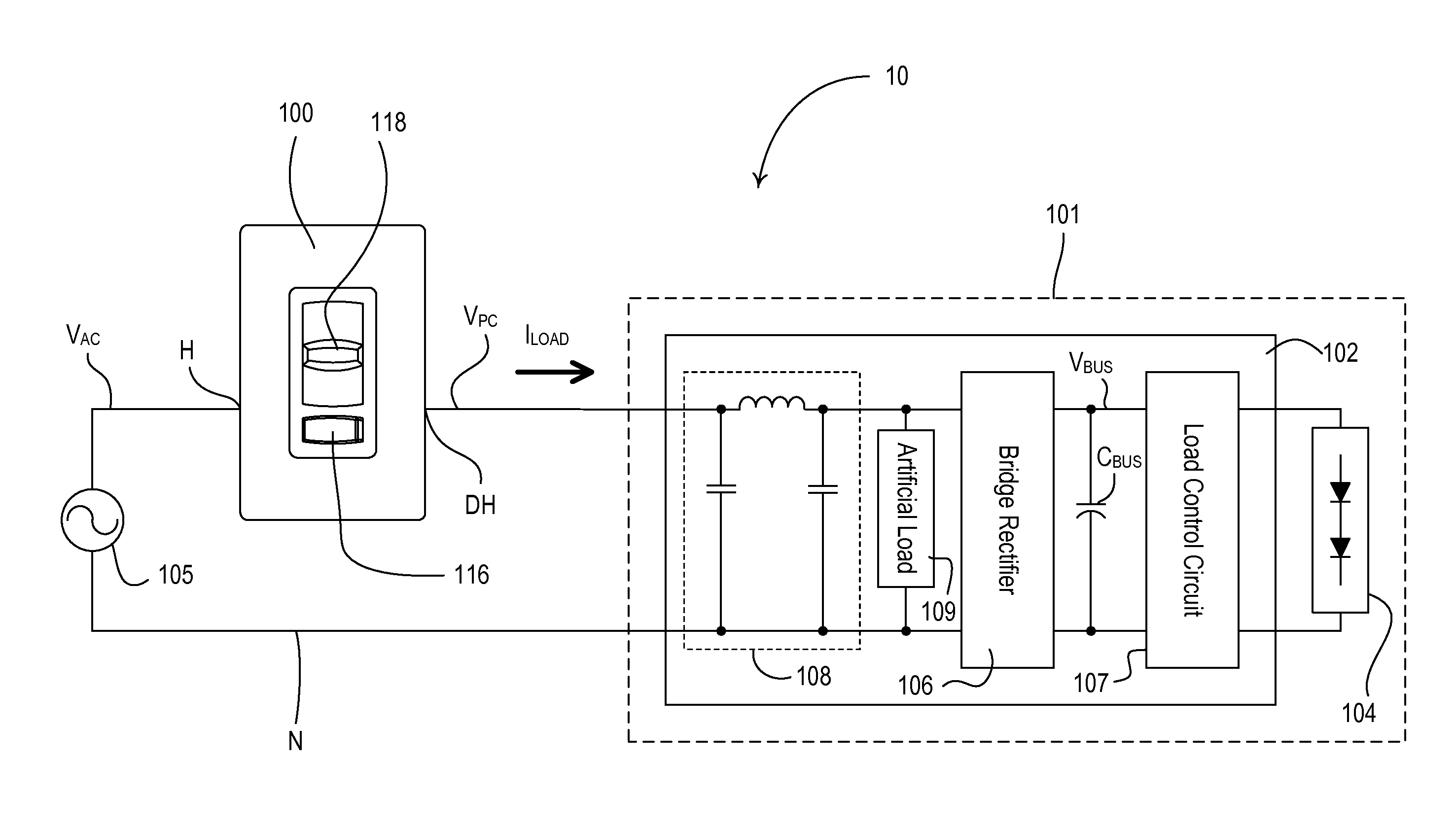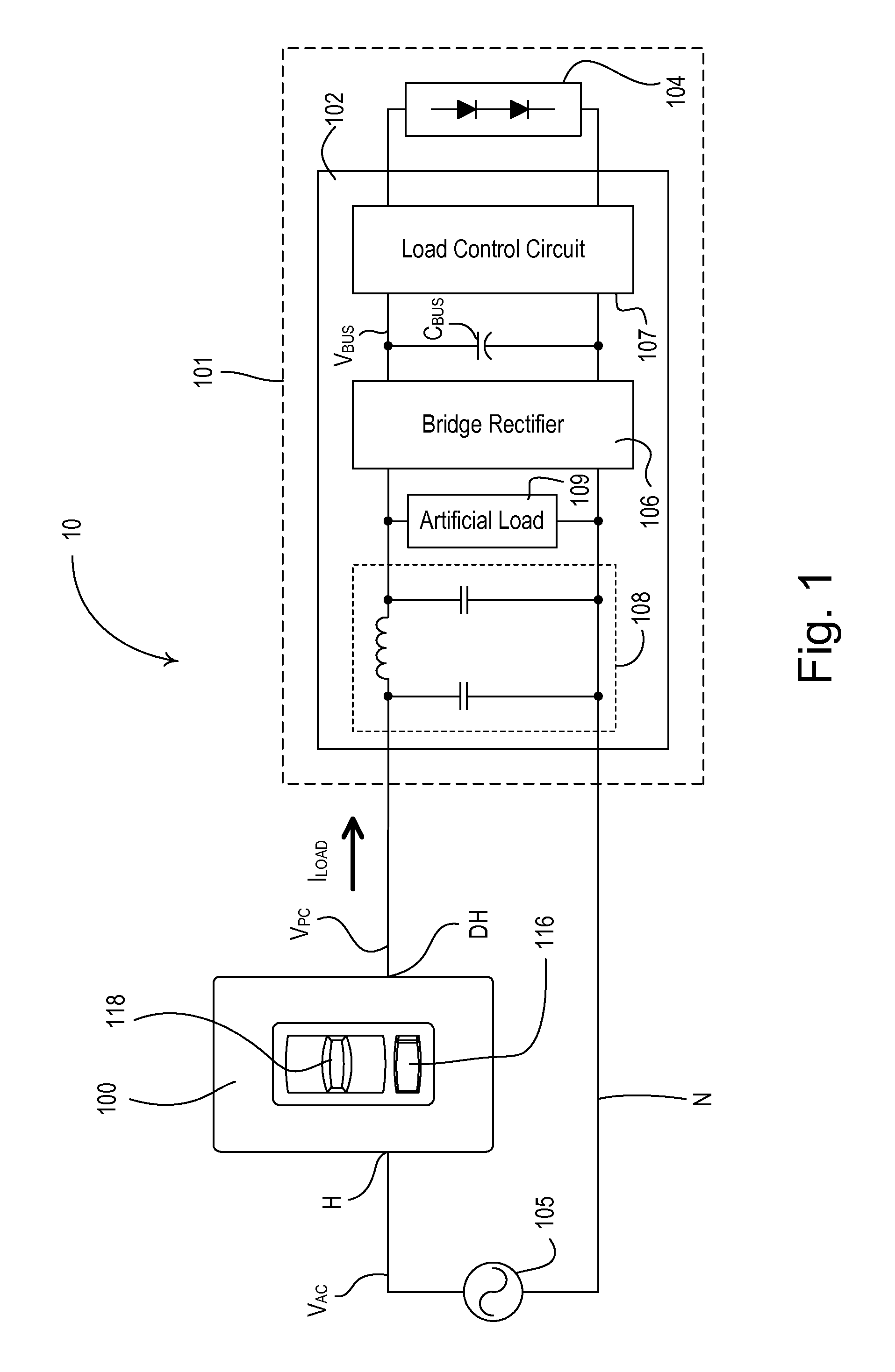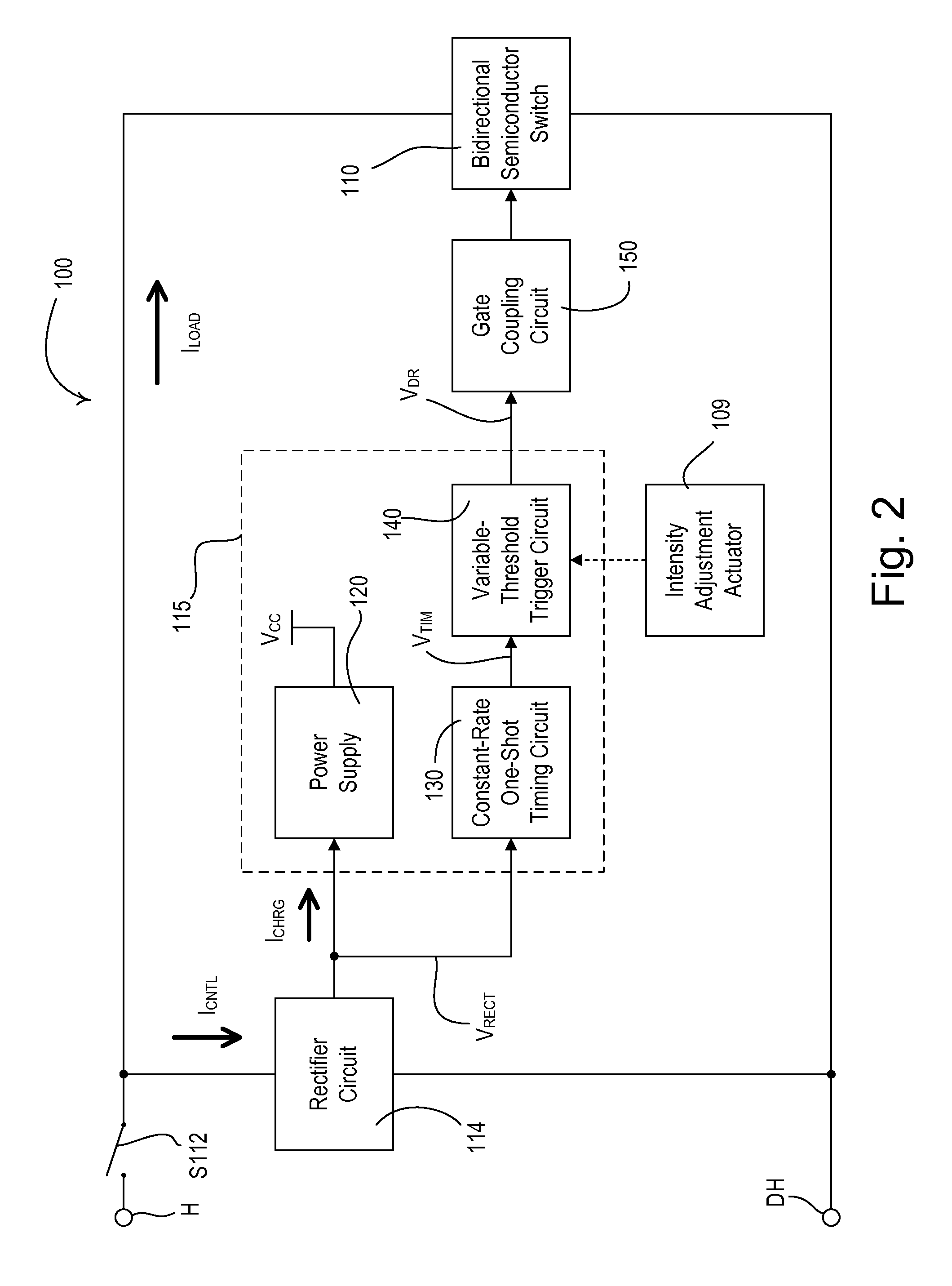Two-wire dimmer switch for low-power loads
a dimmer switch and load technology, applied in the direction of energy-efficient lighting, electroluminescent light sources, sustainable buildings, etc., can solve the problems of increasing the cost of prior art fet-based reverse phase-control dimmer switches, load to illuminate, and high-efficiency light sources typically consume less power and provide longer operational li
- Summary
- Abstract
- Description
- Claims
- Application Information
AI Technical Summary
Benefits of technology
Problems solved by technology
Method used
Image
Examples
first embodiment
[0053] the dimmer switch 100 comprises an analog control circuit 115 including a power supply 120, a constant-rate one-shot timing circuit 130, and a variable-threshold trigger circuit 140 (i.e., a gate drive circuit). The control circuit 115 receives the rectified voltage VRECT from the rectifier circuit 114 and conducts a control current ICNTL through the load (i.e., the LED driver 102) in order to generate a drive voltage VDR for controlling the bidirectional semiconductor switch 110 to thus adjust the intensity of the LED light source 104 in response to the intensity adjustment actuator 118. The power supply 120 of the control circuit 115 conducts a charging current ICHRG through the LED driver 102 in order to generate a supply voltage VCC (e.g., approximately 11.4 volts). The charging current ICHRG of the power supply makes up a portion of the control current ICNTL of the control circuit 115.
[0054]The timing circuit 130 receives the supply voltage VCC and generates a timing vol...
third embodiment
[0086]In addition, the dimmer switch 300 of the third embodiment does not require the opto-coupler U152 to render the triac 110′ conductive. As previously mentioned, the opto-coupler U152 is typically expensive and is characterized by the rated turn-on time, which limits how quickly the triac 110′ can be rendered conductive after becoming non-conductive in response to the load current ILOAD changing directions.
[0087]Since the magnitude of the gate current IG conducted by the FETs Q352A, Q352B of the gate coupling circuit 350 is much less than the magnitude of the load current ILOAD conducted by the triac 110′, the FETs Q352A, Q352B of the third embodiment may be sized smaller in power rating (and accordingly, in physical size) than the FETs Q210A, Q210B of the dimmer switch 200 of the second embodiment (which conduct the load current ILOAD). In other words, because the FETs Q352A, Q352B of the third embodiment do not conduct the load current ILOAD, the FETs need not be power devices...
fourth embodiment
[0090]FIG. 10 is a simplified timing diagram showing examples of the phase-control voltage VPC generated by the dimmer switch 400, the timing voltage VTIM, and the gate voltage VG for driving the FETs Q210A, Q210B according to the present invention. The phase-control voltage VPC has a magnitude equal to approximately the magnitude of the AC line voltage VAC of the AC power source 105 at the beginning of each half cycle during a conduction time TCON, and has a magnitude of approximately zero volts during the rest of the half cycle, i.e., during a non-conduction time TNC. To generate the phase-control voltage VPC, the gate drive circuit 440 drives the gate voltage VG high towards the reference voltage VREF at the beginning of each half cycle, such that the FETs Q210A, Q210B are rendered conductive (as shown at time t1 in FIG. 10). At this time, the timing circuit 430 begins generating the timing voltage VTIM, which comprises a ramp voltage that increases in magnitude with respect to t...
PUM
 Login to View More
Login to View More Abstract
Description
Claims
Application Information
 Login to View More
Login to View More - R&D
- Intellectual Property
- Life Sciences
- Materials
- Tech Scout
- Unparalleled Data Quality
- Higher Quality Content
- 60% Fewer Hallucinations
Browse by: Latest US Patents, China's latest patents, Technical Efficacy Thesaurus, Application Domain, Technology Topic, Popular Technical Reports.
© 2025 PatSnap. All rights reserved.Legal|Privacy policy|Modern Slavery Act Transparency Statement|Sitemap|About US| Contact US: help@patsnap.com



